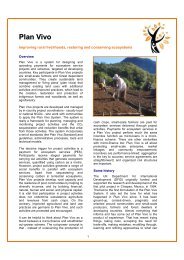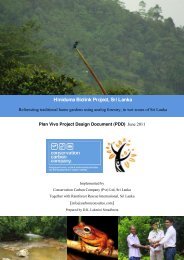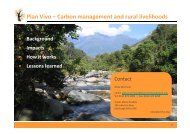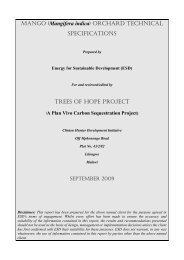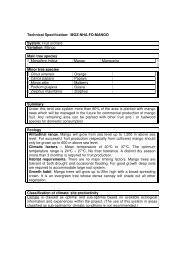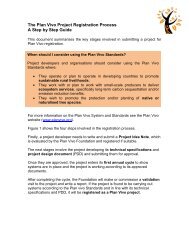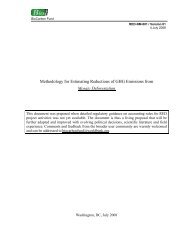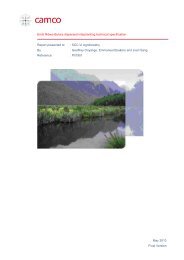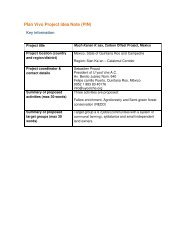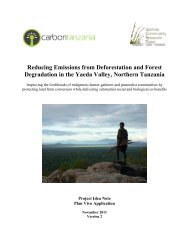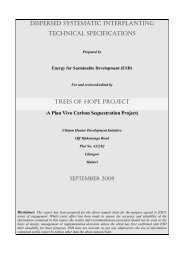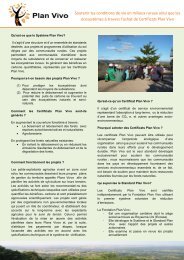Download PIN - Plan Vivo
Download PIN - Plan Vivo
Download PIN - Plan Vivo
- No tags were found...
Create successful ePaper yourself
Turn your PDF publications into a flip-book with our unique Google optimized e-Paper software.
Choiseul <strong>PIN</strong> V1.0 12022013 Sirebe Rainforest and Biodiveristy Conservation Area (SRBCA) Sirebe Rainforest and Biodiversity Conservation Area (SRBCA) and its traditionally owned by Sirebe tribal community. The land area is about 784 Ha and the conservation area is 750Ha. Sometimes the name Pisuku is used interchangeably with Sirebe to refer to the same area. Pisuku refers to a stream and a bivalve shell believed to be found only in a stream within Sirebe Land. Vuri Rainforest and Biodiversity Conservation Area (VRBCA) Vuri Rainforest and Biodiversity Conservation Area (VRBCA) is owned by Vuri sub-‐tribe of Sikipozo main tribe. The land area is about 926 Ha and the conservation area is about 900Ha. The Vuri-‐sub tribal group was the rightful owner of the Vuri land. Kubongava Rainforest and Biodiversity Conservation Area (KRBCA) Kubongava Rainforest and Biodiversity Conservation Area (KRBCA) is the smallest proposed rainforest reserve compare to Sirebe and Vuri. The Kubongava land is traditionally owned by Kubongava Tribal community. The land area is about 468Ha and conservation Area 430 Ha. The Kubongava Rainforest and Biodiversity Conservation Area is not included in this pilot REDD+ project. Sources A Report on the Biodiversity of Three Proposed Protected Areas on Southwest Choiseul Island, 2009, WWF Solomon Islands. NRDF, 2012, www.nrdf.org 2.5.3 Physical Description Of Land And Habitat TypesAll of the sites within the Project Area comprise lowland rainforest that runs from ridgelines at the head of these catchments to the coastline. Choiseul has a long history of human forest-‐dwelling communities and consequent human influences on the forest systems. The forests of the Project Area are, however, rich in biological diversity and have high timber stocking rates, and are hence attractive as a timber resource for economic development. The Project Area forest habitats comprise: • Primary and tall secondary forests. • Open areas and forest edges. • Streams and river channels. 30




